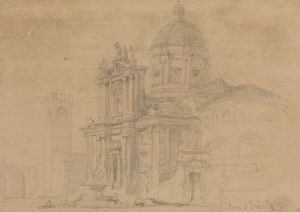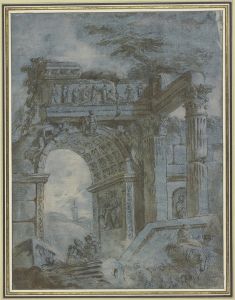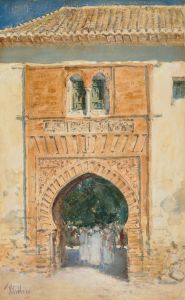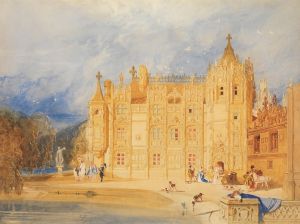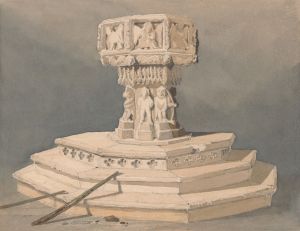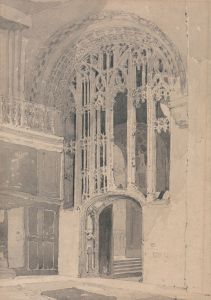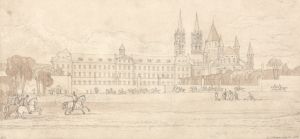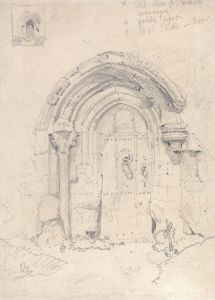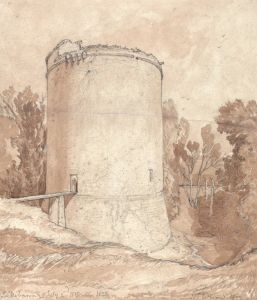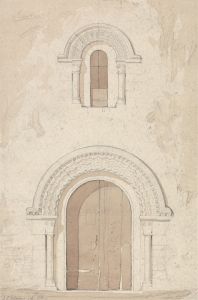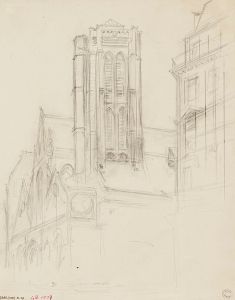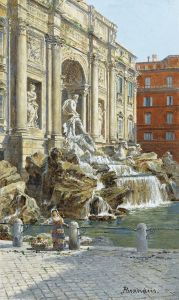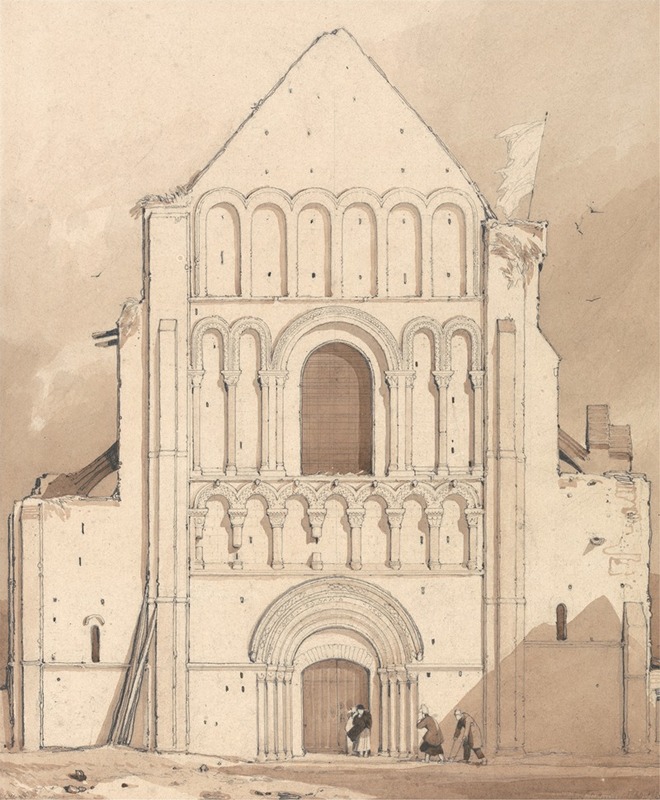
West Front of the Church of Oyestraham [Ouistreham], near Caen, Normandy
A hand-painted replica of John Sell Cotman’s masterpiece West Front of the Church of Oyestraham [Ouistreham], near Caen, Normandy, meticulously crafted by professional artists to capture the true essence of the original. Each piece is created with museum-quality canvas and rare mineral pigments, carefully painted by experienced artists with delicate brushstrokes and rich, layered colors to perfectly recreate the texture of the original artwork. Unlike machine-printed reproductions, this hand-painted version brings the painting to life, infused with the artist’s emotions and skill in every stroke. Whether for personal collection or home decoration, it instantly elevates the artistic atmosphere of any space.
John Sell Cotman was a prominent English painter and etcher, known for his contributions to the Romantic movement and his mastery in watercolors. One of his notable works is "West Front of the Church of Oyestraham [Ouistreham], near Caen, Normandy," which exemplifies his skill in architectural depiction and his interest in historical structures.
Cotman was born in 1782 in Norwich, England, and became a leading figure in the Norwich School of painters, a movement known for its focus on landscape and natural scenes. His travels across Europe, particularly in France, significantly influenced his work. During the early 19th century, Cotman made several trips to Normandy, where he was captivated by the region's medieval architecture. These trips were part of a broader interest among British artists in the picturesque and historical aspects of continental Europe.
The painting "West Front of the Church of Oyestraham [Ouistreham], near Caen, Normandy" is a product of Cotman's Normandy excursions. Ouistreham is a commune in the Calvados department in the Normandy region of northwestern France. The church depicted in Cotman's work is the Church of Saint-Samson, a notable example of Norman architecture. This church, with its Romanesque and Gothic elements, provided Cotman with a rich subject for exploration in terms of form, texture, and light.
Cotman's approach to this painting reflects his keen interest in the architectural details and the atmospheric qualities of the scene. He was known for his ability to capture the essence of a structure through careful observation and a delicate balance of light and shadow. In this work, Cotman likely employed his characteristic use of watercolors, which allowed him to achieve subtle gradations of tone and a sense of depth.
The painting is not merely a representation of a building but also an exploration of the interplay between architecture and its environment. Cotman's work often conveys a sense of tranquility and timelessness, qualities that are evident in his depiction of the church's west front. The composition likely emphasizes the solidity and grandeur of the structure, while also highlighting the surrounding landscape, which would have been integral to the church's historical and cultural context.
Cotman's Normandy paintings, including this one, were well-received in his time and continue to be appreciated for their artistic and historical value. They offer insights into the architectural heritage of the region and reflect the broader Romantic fascination with the past and the sublime aspects of nature and human creation.
Throughout his career, Cotman produced a significant body of work that includes not only paintings but also etchings and drawings. His contributions to art were recognized by his contemporaries, and he held various teaching positions, including a notable tenure at King's College School in London. Despite facing financial difficulties later in life, Cotman's legacy as a master of watercolor and a pioneer of the Romantic landscape tradition remains influential.
In summary, "West Front of the Church of Oyestraham [Ouistreham], near Caen, Normandy" by John Sell Cotman is a testament to his skill in capturing the architectural beauty and historical significance of Normandy's medieval structures. Through his meticulous technique and artistic vision, Cotman has left an enduring impression on the world of art.





